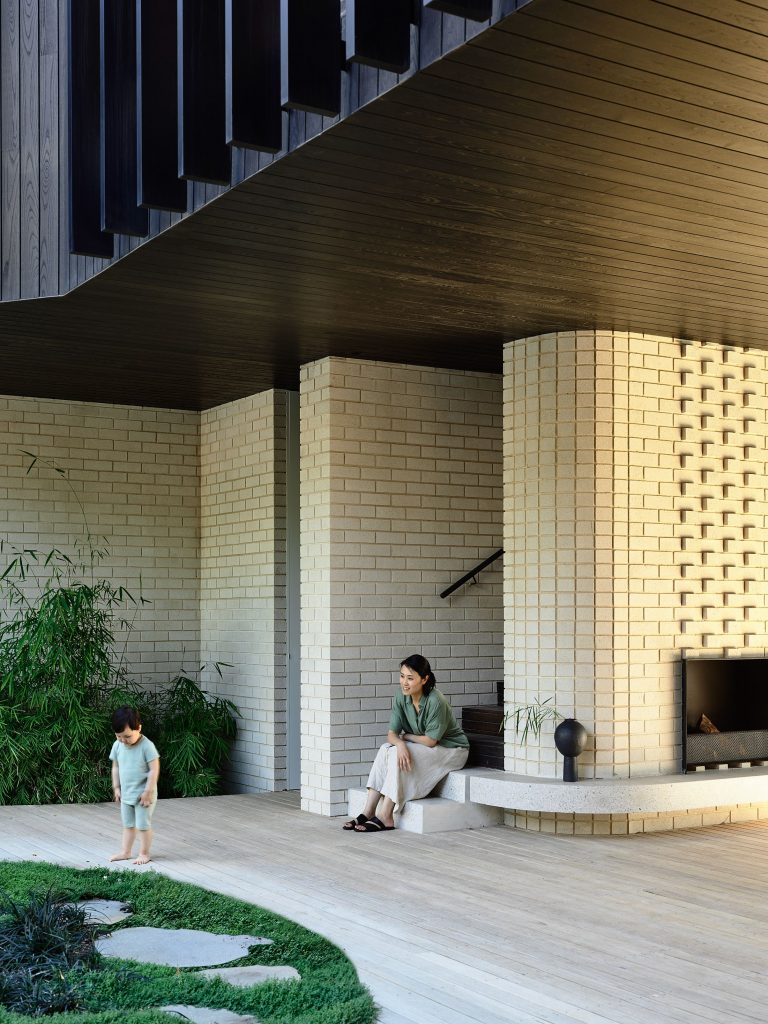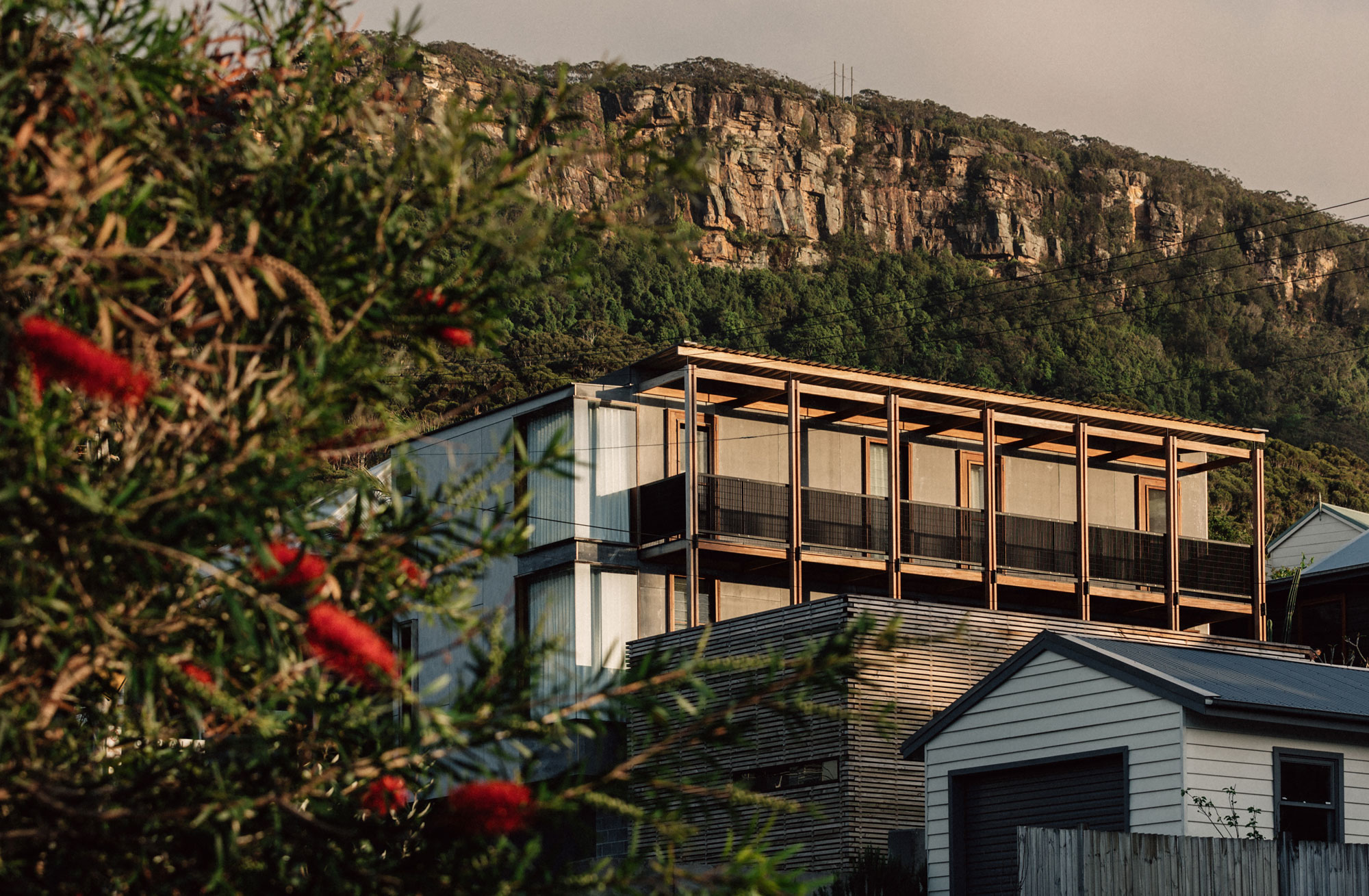
Expansive and communal – Brimar house by MODO
Expansive and communal – Brimar house by MODO
Share
Accommodating a retired couple, two young-adult children and guests, Brimar house required harmonious shared spaces that didn’t compromise privacy.
The brief supplied to Michael Ong Design Office (MODO) director Michael Ong was to create a visually dynamic communal residence at the 600-square metre Brimar house in Mount Waverley, Victoria.
The outcome is a generous and tranquil multi-generational home that is both striking and composed.
“From the street, the homeowner wanted something that was a bit dynamic and had a point of difference,” explains Ong.

With a divided exterior, the bottom half of Brimar house consists of ivory-coloured concrete brick, while the second storey is clad in thermally-modified timber.
Ong thought it was important that the house felt grounded and embedded into the earth, providing a sense of ‘mass’ and ‘weight’.
“We naturally looked into concrete bricks and blocks and moved away from the grey and darker tones, as we wanted a house that felt welcoming and homely,” says Ong.
“The light-coloured ivory architectural brick from Adbri Masonry worked wonderfully to give us a smooth yet subtly textured finish, which paired beautifully with the timber cladding and the landscape design.”

The concrete brick walls of the ground floor are designed as two linear wings, one containing the guest zone and the other for the young people. These are linked by a sweeping curved glass corridor, a distinctly lightweight structure when compared with the two brick, veneered volumes.
The style between the two floors is deliberately subdued, minimal and restrained.
On the second floor are the family bedrooms, kitchen, living and dining areas, as well as a pool, sauna and gym. To give an intimate feel, MODO incorporated dark interior tones, from dark wood walls to wooden cabinets, timber ceilings and floors, and dark details on fireplaces and bookshelves.

Central to the lower floor is a sun-filled private courtyard.
“The courtyard allowed us to create a centre and an anchor for the whole house,” says Ong.
“I wanted the house to feel like it’s connected with the courtyard as the central area, so you always know where you are.”
The outside and inside spaces are carefully shaped to form an architecture that invites the residents to enjoy every part of the house.
“I have always been fascinated by courtyards, and here we looked at a version that was formed by two volumes wrapping around each other at two different levels,” adds Ong.
A series of delicate silver birch trees in the courtyard provides a space for quiet contemplation. A curved in situ concrete bench acts as a ‘rest stop’ encouraging those using the space to slow down.

On a warm day, the series of pivot steel doors and louvre windows can be opened, transforming the space into an exterior bench and verandah.
Curves feature throughout the build, adding a soft and more sculptural look. To offset the heaviness of the brick, delicate lace-like details curve gently with the wall. Steel plates were used through each level of brick to hold the lacework together.
“The architects did a lot of work with the bricklayer and the engineer to get the concrete brick lacework to curve. The result of the lace detailing allows more light in and draws the eye to the sculptural element within the build,” says Ong.

Ong says the most satisfying aspect of working on Brimar house is to see how it now settles into the garden and is slowly ageing. He has already noticed that the bricks are building up a beautiful patina.
“It is wonderful and I can’t wait to see what it will look like over the next five to 10 years!”
Already picking up industry recognition, Brimar house received a Kevin Borland Masonry Award – High Commendation at the Think Brick Awards 2022.
Photography supplied by Derek Swalwell.
For more on MODO’s design approach, ADR spoke to Michael Ong in 2017.
You Might also Like




















